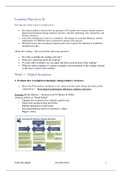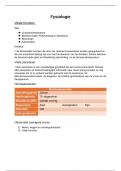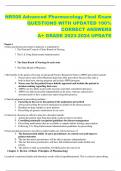Samenvatting
Complete Summary of all Lectures + Notes
A comprehensive summary of the lectures and lecture notes that were covered in the course Information Strategy (IS) by Ting Li and her colleagues at RSM. The summary includes screenshots/pictures of all key concepts (i.e. learning objectives) of the Information Strategy course. Topics discussed in ...
[Meer zien]








